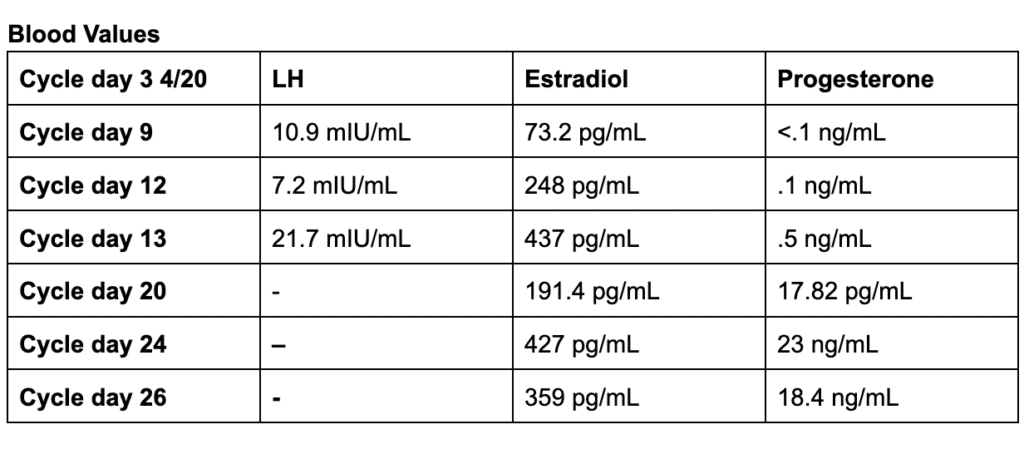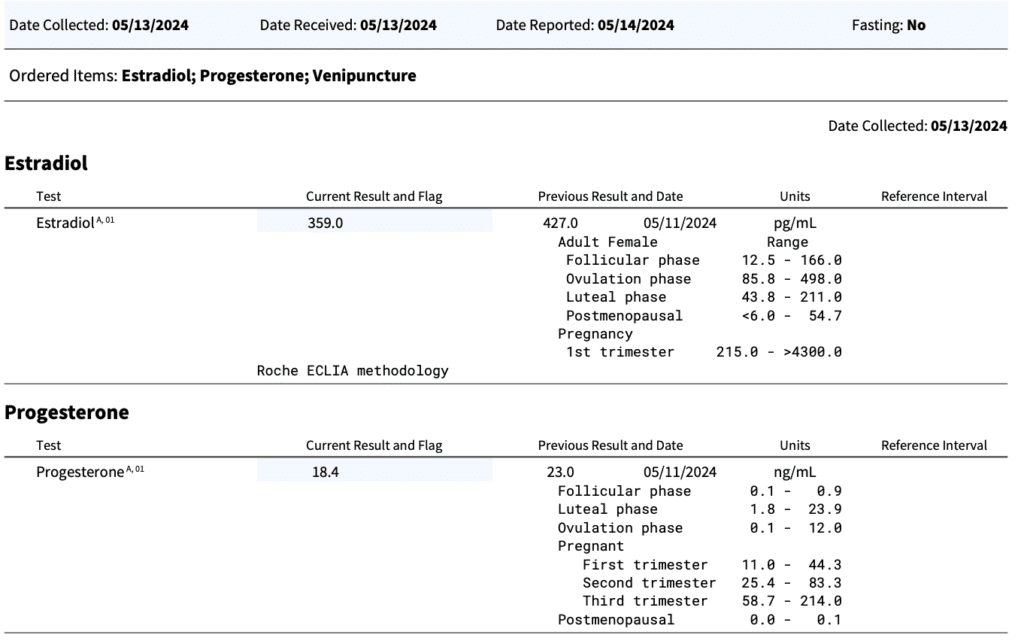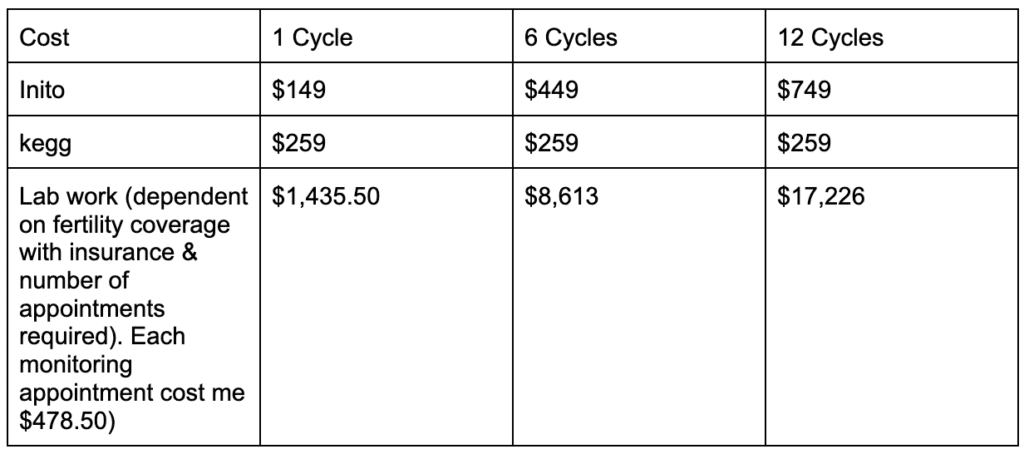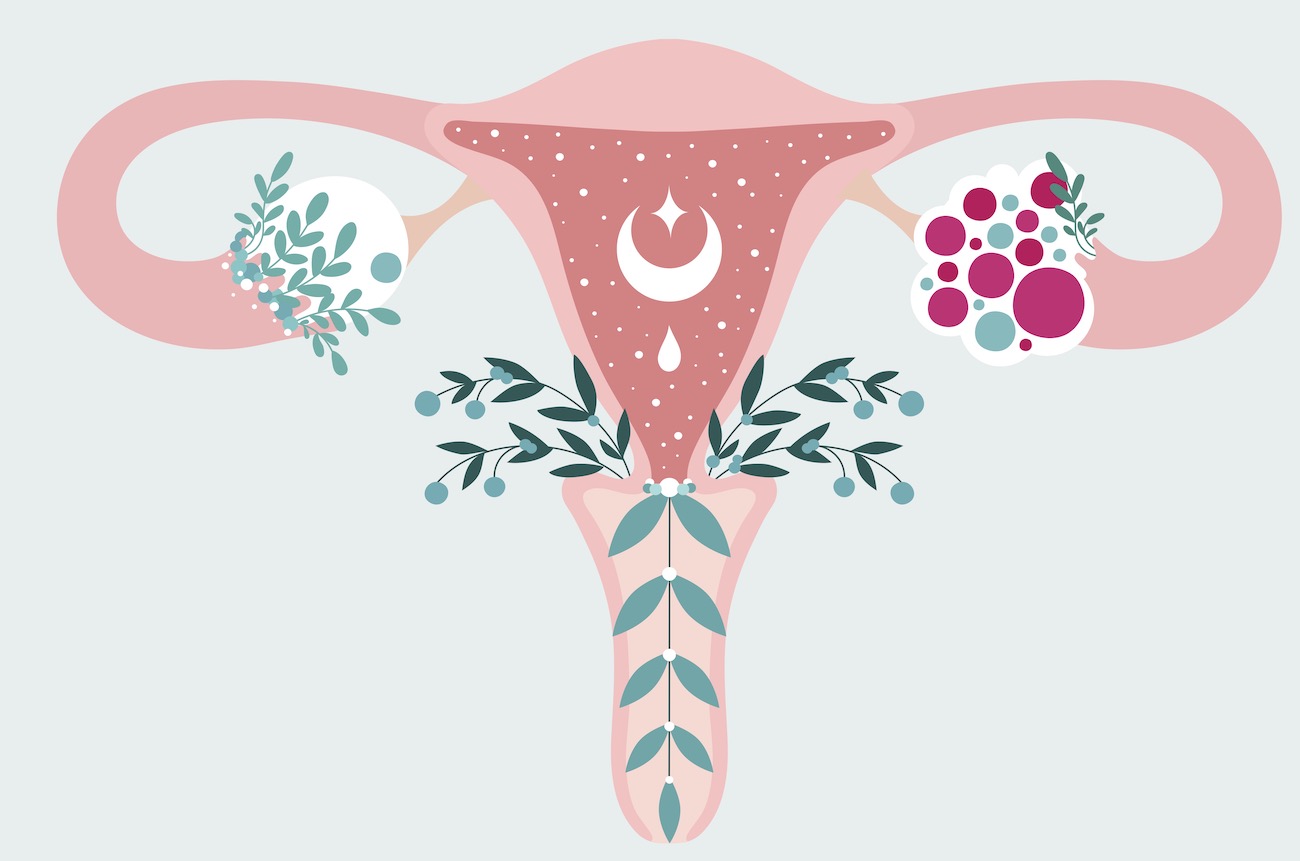After an entirely frustrating experience with Inito, Joyce expressed her interest in sharing her experience with us.
When my doctor recommended I track my own ovulation during my monitored cycle with intrauterine insemination, my mind was spinning. One thing that is very important with fertility care of any kind is timing. If I didn’t correctly pinpoint my ovulation, this could result in a negative pregnancy test in an otherwise promising cycle.
Is Inito accurate?
Inito touted that it would give me the hormone values, but knowing that these were coming from urine, I didn’t expect the values to be exact when compared to my blood. During my intrauterine insemination cycle my doctor planned to draw my blood and perform a transvaginal ultrasound on cycle day 3 (also known as “baselines”), and then as I approached ovulation and after. I was astounded that my Inito trends did not trend with my labs.
Comparing Inito and kegg (to my lab work)
I was shocked to see my peak luteinizing hormone (LH) on my blood work when Inito read a low value. Similarly, my pregnanediol glucuronide, or PdG (the urine hormone metabolite of progesterone) remained low after ovulation, which was extremely concerning. Great, I thought. I must have super low progesterone, despite all the symptoms of high progesterone, so I sought out two extra monitoring labs to test hormones to the tune of $957, all because Inito was incorrect. Turns out my progesterone was right in the high-normal range to support implantation. As the cycle progressed, the accuracy of Inito only further deteriorated.



My inaccurate Inito results misled me.
If you look at the trends it is very apparent Inito didn’t trend properly with my blood lab values. My estrogen remained flat lined at 600 despite massive fluctuations from the 100s to 400s per my lab results. My progesterone appeared low mid and late cycle but my blood values revealed very healthy, normal levels. My LH appeared low on cycle day 13 but this is in fact the day it surged and Inito failed to identify my LH rise. This was the day we did my intrauterine insemination and had we not drawn blood, we would have not proceeded with my IUI.
Inito didn’t help. How did kegg do?
I regret moving forward with Inito as the hormone values were not accurate. But, how did kegg do? In order for this chart to make sense, you must understand that the fertile window in kegg readings is a valley. Cervical mucus holds the insights into when conception may be possible. Cervical mucus becomes more watery and sperm friendly as you approach ovulation, and as a result, kegg readings move downwards on the chart. Ovulation most often occurs on the day before the readings head upwards out of the valley.

My kegg accurately shows the fertile window
From the beginning of my fertile window, it was apparent I was heading into my fertile valley. It is clear my cervical mucus was becoming more sperm friendly, and I was in my fertile valley. If we had been trying to conceive naturally, I would have had intercourse throughout this full timeframe. As you can see, my IUI was properly timed when my kegg readings were low in the valley (represented with the heart). When comparing estrogen levels with Inito, it is clear kegg was showing my fertile valley occurring earlier than my observed estrogen rise on Inito.
Which fertility tracker helps you get pregnant?
It is apparent Inito does not work. Inito requires the user to use a new wand for each test. These test wands contain small strips that test the various urine hormone metabolites. In addition to being wasteful and inaccurate, they are expensive and run me about $65 per cycle (based on my very normal cycle length). Blood, while accurate, is incredibly expensive and there is a significant lag time in results. My intrauterine insemination was an ‘add-on’ at the end of the day as my LH had soared and my labs did not come back until 4 PM- and that was a STAT order!
My experience exemplified that kegg works. Being a kegg user does not require me to spend loads of money each cycle and tracks the metric that makes up the fertile window: cervical mucus. While my intrauterine insemination was not successful, we took the next cycle “off” from a medical standpoint and I used kegg alone. We simply got busy when my kegg chart showed my beautiful valley. This instilled confidence that my body was doing what it was supposed to. The result? Two beautiful positive pregnancy lines. We will welcome baby Kenya next month!





